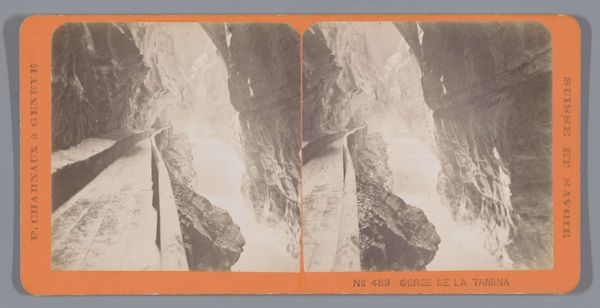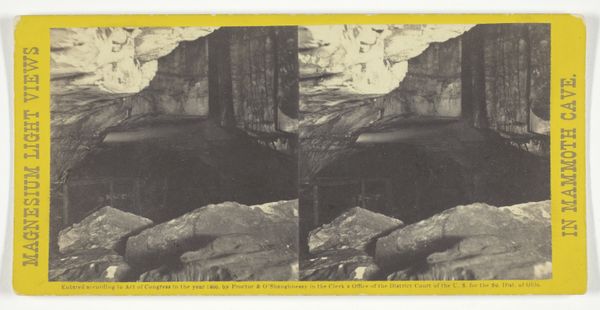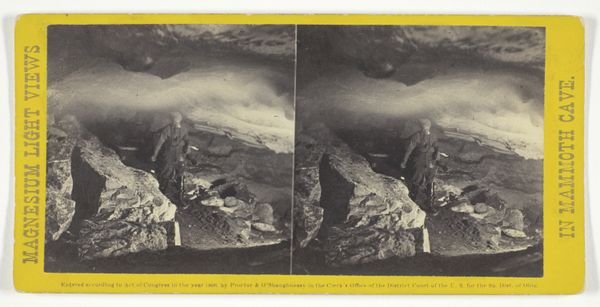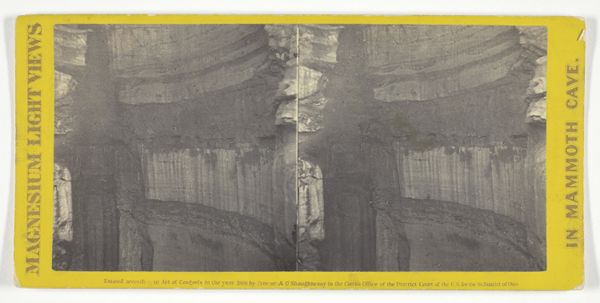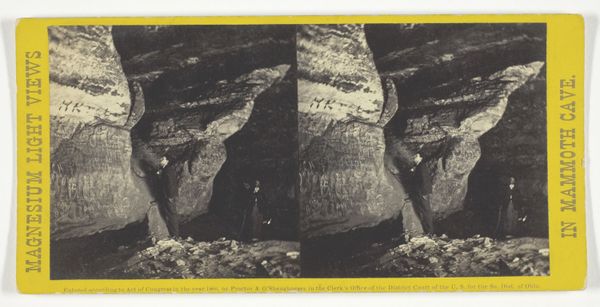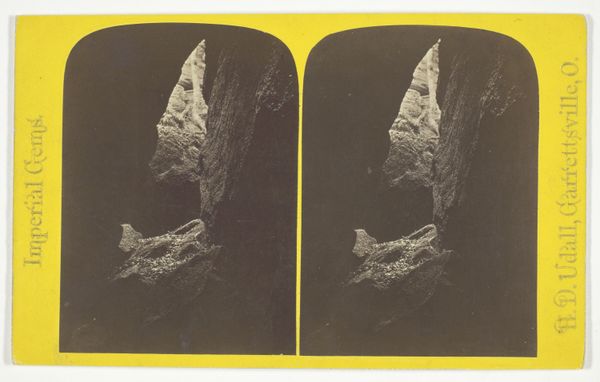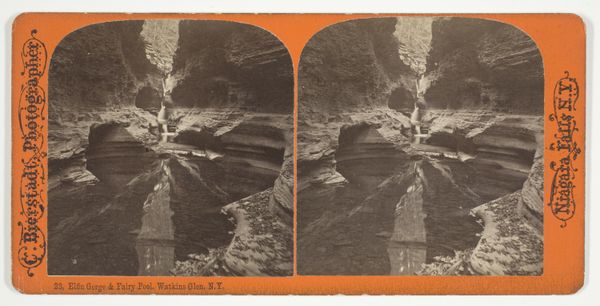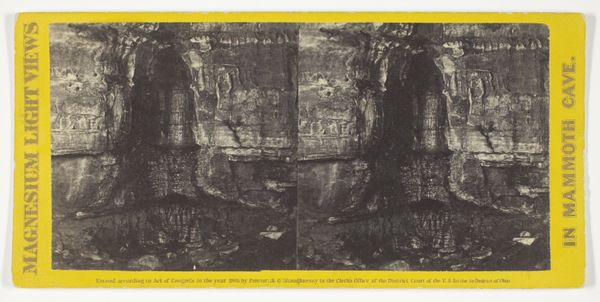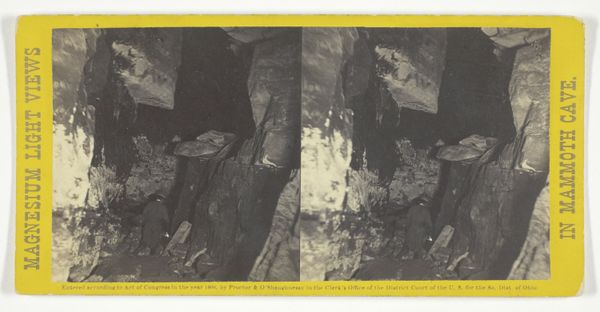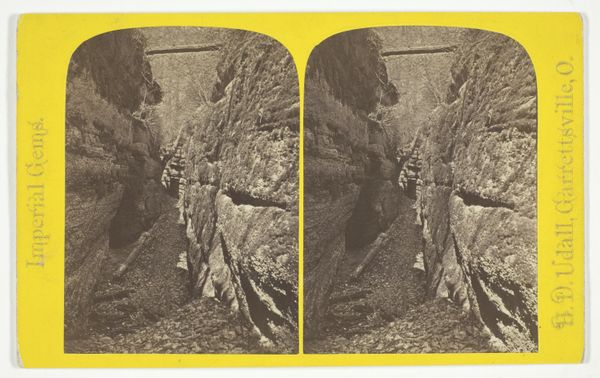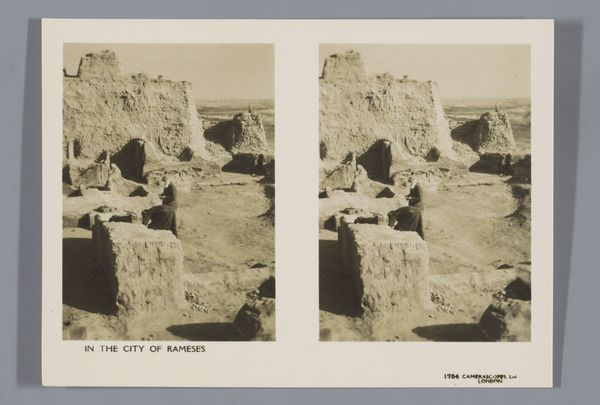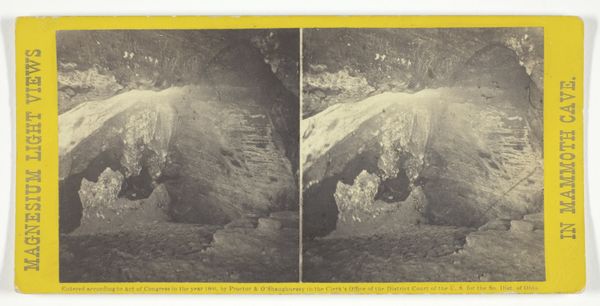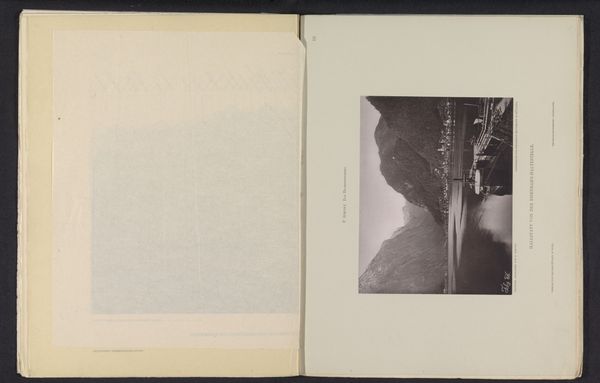
print, photography
# print
#
landscape
#
photography
Dimensions: 8 × 7.4 cm (each image); 8.8 × 17.7 cm (card)
Copyright: Public Domain
Curator: Henry Hamilton Bennett created "Skylight Cave in the Navy Yard," a photograph dating back to 1903. Editor: There's such starkness, isn't there? It's almost claustrophobic, yet the light suggests possibility. The shadows are heavy. Curator: Bennett's photographs often depicted landscapes in the Wisconsin Dells area, focusing on capturing its unique geological formations and Native American life. There's certainly a sense of adventure and exploration, even within the confines of the cave. Editor: This image speaks volumes about our complicated relationship with "natural resources". The starkness you mention may mirror a deep ambivalence about the tension between environmental reverence and colonial appropriation, with indigenous dispossession occurring around this period, alongside increasing industrial development. How might his lens normalize certain behaviors or beliefs? Curator: That's a really valid point. Bennett’s work does exist within a complex historical context and undoubtedly romanticizes an era. One could argue that this is further emphasized in this image with the lone man paddling away from us, a visual manifestation of colonial displacement of land, resources, and people from a Native perspective. Editor: Exactly! He frames nature in a way that’s easy on the eye, obscuring these broader conflicts that he might be contributing to without explicit consideration, I might argue. This image becomes not only about light and darkness in this geographical context, but about revealing or concealing sociopolitical realities. Curator: But do you not see some value to understanding continuity within that imagery? He’s visually tapping into a very old understanding of the earth, as seen in many different ancient cultures where darkness and light both make sense only within relation to one another. To that extent, that basic visual pattern taps into something timeless. Editor: Timeless, perhaps, but that timelessness must then also extend to Indigenous resilience. Can we look at photographs like this and then actively acknowledge the ways people resisted, even when seemingly being "paddled away?" Otherwise we risk simply recycling colonialist visual narratives. Curator: I suppose it pushes us to acknowledge and address the uncomfortable truths. It's definitely not a one-dimensional portrayal. Editor: Right, a single image might only ever hint at it; perhaps through dialogue it sparks understanding.
Comments
No comments
Be the first to comment and join the conversation on the ultimate creative platform.
